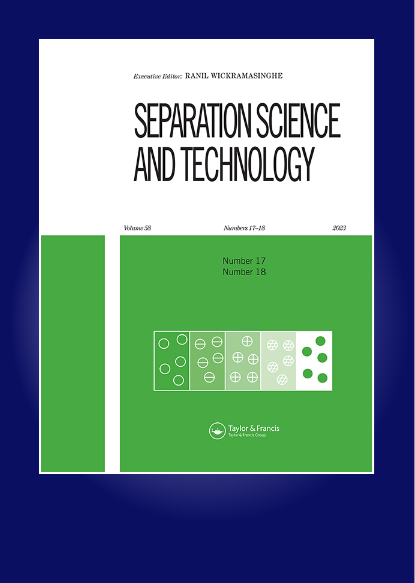以米糠油为助溶剂,SC-CO2萃取红木瓜中的番茄红素,减少其在储存过程中的降解
IF 2.3
4区 工程技术
Q3 CHEMISTRY, MULTIDISCIPLINARY
引用次数: 0
摘要
以超临界二氧化碳和米糠油(RBO)为共溶剂,从冻干木瓜中提取番茄红素。实验采用中心复合设计(响应面法),每个工艺变量为5个水平,即压力(25-50 MPa)、温度(55-85°C)和提取时间(60-210 min)。在35.4 MPa, 67°C, 130 min的条件下,实现了各响应变量的单一最优点。在此条件下,番茄红素的提取率为79.27±1.69%,γ-米素含量为11079±146 mg/L。超过80℃和180 min的提取温度和时间对番茄红素有不利影响。此外,在无光照条件下,番茄红素的半衰期分别为42、24和9天,在3℃、10℃和25℃条件下,番茄红素的一级降解动力学。结果表明,RBO作为助溶剂提高了番茄红素的提取效率,防止了番茄红素在提取和储存过程中的降解。本文章由计算机程序翻译,如有差异,请以英文原文为准。
SC-CO2 extraction of lycopene from red papaya using rice bran oil as a co-solvent lessens its degradation during storage
ABSTRACT Lycopene was extracted from freeze-dried papaya using supercritical carbon dioxide and rice bran oil (RBO) as a co-solvent. Central composite design (Response surface methodology) with five levels of each process variable, i.e. pressure (25–50 MPa), temperature (55–85°C), and extraction time (60–210 min), was used for conducting the experiments. The single optimal point for various response variables was realized at 35.4 MPa, 67°C, and 130 min. Under these conditions, a lycopene extraction efficiency of 79.27 ± 1.69% and a γ-oryzanol content of 11,079 ± 146 mg/L were predicted. The combination of extraction temperature and time beyond 80°C and 180 minutes showed a detrimental effect on lycopene. Furthermore, the storage of extract under no-light conditions showed first-order degradation kinetics with half-life values of lycopene of 42, 24, and 9 days at 3, 10, and 25°C, respectively. Results show that the use of RBO as a co-solvent improved the extraction efficiency and prevented lycopene degradation during extraction and storage.
求助全文
通过发布文献求助,成功后即可免费获取论文全文。
去求助
来源期刊

Separation Science and Technology
工程技术-工程:化工
CiteScore
6.10
自引率
3.60%
发文量
131
审稿时长
5.7 months
期刊介绍:
This international journal deals with fundamental and applied aspects of separation processes related to a number of fields. A wide range of topics are covered in the journal including adsorption, membranes, extraction, distillation, absorption, centrifugation, crystallization, precipitation, reactive separations, hybrid processes, continuous separations, carbon capture, flocculation and magnetic separations. The journal focuses on state of the art preparative separations and theoretical contributions to the field of separation science. Applications include environmental, energy, water, and biotechnology. The journal does not publish analytical separation papers unless they contain new fundamental contributions to the field of separation science.
 求助内容:
求助内容: 应助结果提醒方式:
应助结果提醒方式:


